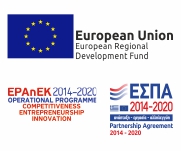Table of Contents
What the Programming market wants – and why it should matter to you
In the world of technology, one thing is certain: everything changes. In 2025, amidst breakthroughs in artificial intelligence, shifts toward cloud-native architectures, and growing demands for real efficiency, programming languages are not being left behind — they are evolving and transforming. Some well-known veterans are returning stronger than ever, while new, fresh contenders are claiming their share in this dynamic landscape.
For developers and tech professionals — especially in sectors like telecom, SaaS, or AI — knowing which programming languages are in highest demand is more than trivia. It’s a strategic advantage.
Let’s dive into which languages are “playing ball” in 2025 — and why that matters for your career, your team, or your business.
1. Python – The friendly giant that got smarter
Python continues to dominate in 2025 — not just because it’s easy or pleasant to use, but because it has become a foundational tool for machine learning, data science, automation, and scripting.
With support from frameworks like TensorFlow and PyTorch, and new tools boosting its performance, Python is now as powerful as it is flexible.
Why it matters:
If your work involves data, analytics, automation, or AI (and honestly, whose doesn’t anymore?), Python is absolutely essential.
2. JavaScript & TypeScript – The pulse of the web
The web can’t exist without JavaScript. In 2025, that remains true. But the game has changed: more and more developers are turning to TypeScript — a stricter and safer version of JavaScript.
Together, they power full-stack development: from frontend and backend (Node.js) to mobile (React Native), and even desktop applications.
- Why it matters:
If you’re building applications used by people — JavaScript and TypeScript are unavoidable.e built and why.
3. Java – The veteran that’s still relevant
Java might be “old school,” but it stands the test of time. With continuous updates (e.g. Java 21 & 23) and frameworks like Spring Boot, it remains a go-to choice for large enterprises, financial systems, and Android development.
Why it matters:
If you work with banks, government bodies, or organizations that need scalability and stability, Java is still a safe bet.
4. Go – The language that grew up
Go, built by Google, started off as a “startup language.” But in 2025, it’s a mature, stable choice used in cloud infrastructures, APIs, and microservices.
Its simplicity, built-in concurrency, and reliable performance make it ideal for modern web-scale applications.
Why it matters:
If your infrastructure is transitioning to Kubernetes, Docker, or microservices, Go is a must-have tool.
product is closely aligned with the client’s real, evolving needs.
5. Rust – The language that balances speed and safety
Rust has become the go-to for developers who want performance without the bugs. It has no garbage collector, yet offers memory safety — a game-changer in embedded systems, IoT, infrastructure, and even parts of the cloud.
Major companies like Microsoft and Amazon already use Rust in critical systems.
Why it matters:
In environments where security and performance go hand in hand (like telecoms or edge computing), Rust isn’t just a trend — it’s a solution.
6. C++ – The tireless workhorse
C++ continues to lead in areas that demand direct hardware control, speed, and real-time responsiveness: games, trading algorithms, simulations, and even telecom protocols.
Why it matters:
The community remains active, and the latest versions are bringing in modern features.
7. SQL – The underrated essential
SQL means data. Even though NoSQL and GraphQL are trending, SQL is still essential — especially with the boom in BI, analytics, and dashboard tools.
Why it matters:
If you work with data, whether you’re a developer or a business analyst, SQL is a skill you must master.
8. Mojo & Zig – The emerging players
Mojo: A fresh language promising the power of C++ with the ease of Python. Designed specifically for AI workloads.
Zig: Lightweight, statically typed, and ideal for embedded systems. It’s steadily rising in popularity and gaining loyal followers.
Why it matters:
If you like experimenting or investing early in languages that signal where the market is heading, these are worth your attention.
Table: Comparative Table (2025)
| Language | Core Strengths | Industries / Use Cases |
|---|---|---|
| Python | AI, ease of learning, ecosystem | Data analysis, ML, scripting, backend |
| JavaScript / TypeScript | Web UIs, strong typing | Web apps, frontend/backed systems |
| Java | Scalability, enterprise compatibility | Enterprise backend, Android, financial systems |
| C++ | Raw performance, system-level control | Trading systems, simulations, gaming |
| C# | .NET ecosystem, ease of use | Enterprise apps, Windows development |
| SQL | Database querying, analytics | All data-centric roles |
| Go | Concurrency, simplicity, cloud-native | Infrastructure, microservices, fintech |
| Rust | Safety, speed, modern design | Embedded systems, web, infrastructure |
| Mojo | Python-like syntax with AI power | Machine learning, research development |
| Zig | Low-level, lean syntax | Systems programming, embedded applications |
So… What Should You Learn?
It depends on your role and goals:
| If you are… | Then consider learning… |
|---|---|
| Backend developer | Go, Rust, Java |
| Full-stack or frontend dev | TypeScript, JavaScript |
| Systems engineer | Rust, Zig, C++ |
| Data analyst or engineer | Python, SQL |
| AI/ML researcher | Python, Mojo, Rust |
Final Thoughts: Code is Culture
In 2025, programming languages aren’t just tools — they reflect the way we see the world and the priorities of modern businesses: efficiency, security, scalability, accessibility. At Cytech, we believe in continuous learning and technological agility. And that means knowing not only what’s being coded today — but what will be coded tomorrow.
Whether you’re building software, leading innovation, or simply love technology, understanding the top languages of 2025 isn’t a luxury. It’s an engine of growth — personal, technical, and strategic.

